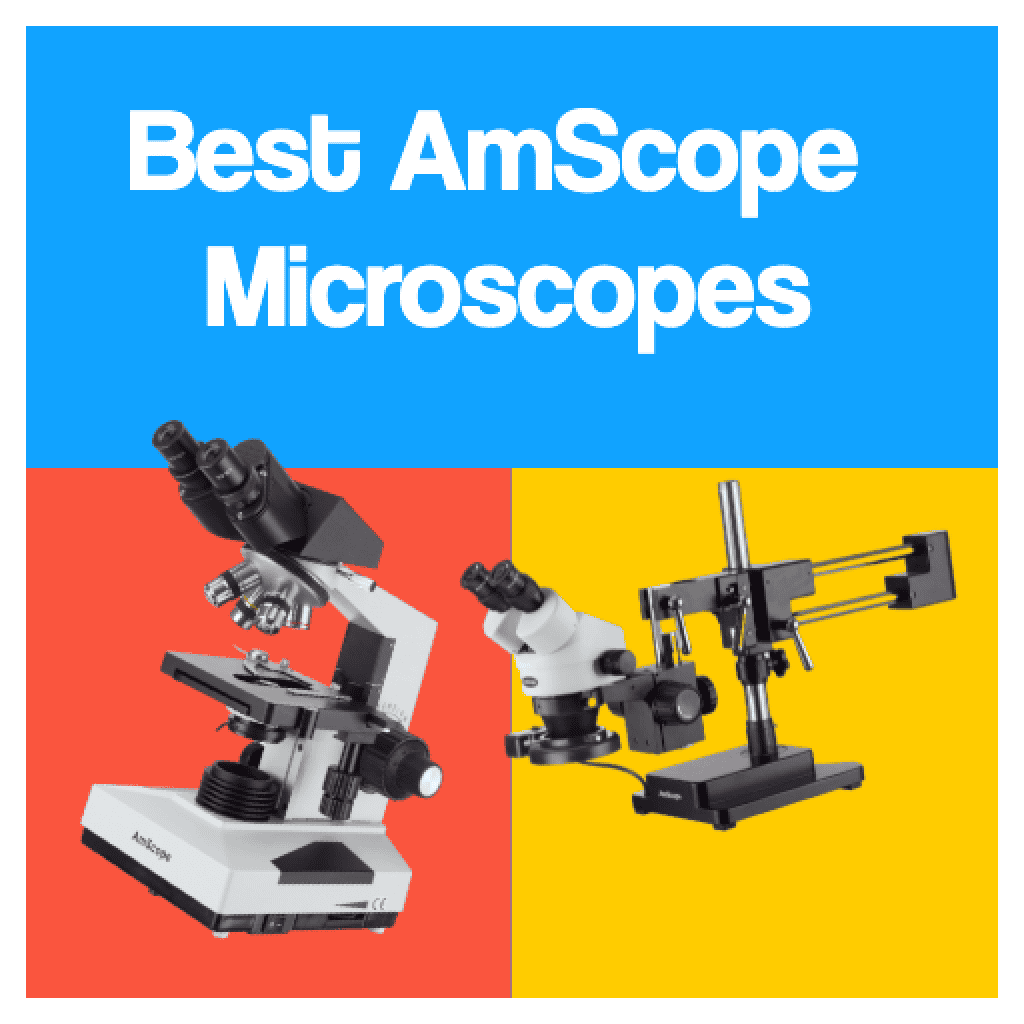
The best microscope for homeschooling isn’t just a tool—it’s a gateway to wonder and discovery.
But what makes a microscope suitable for the homeschooled purpose?
It’s not just about the price tag; it’s about choosing one that doesn’t compromise on quality or educational value.
I’ve collated the essential information into a buying guide to help you pick the right one for your homeschooling requirements.
Whether you want to examine pond water or peer at onion cells, having the right microscope can transform a standard lesson into an enthralling expedition through the microscopic world.
Comparison Guide: Different Types of Microscopes for Homeschooling
A high-quality homeschool microscope for home-based education is key to helping students learn and explore the microscopic world.
Yet not all microscopes are created equal – each type serves a distinct purpose in fostering learning and scientific exploration.
Stereo vs. Digital vs. Compound Microscopes
In comparing stereo microscopes to their digital and compound counterparts, I appreciate their ability to provide students with a three-dimensional view, perfect for examining mineral samples or complex biological structures.
Yet, using digital microscopes for homeschooling is increasingly popular for its user-friendly interface and ability to capture images for further analysis or sharing among peers.
In contrast, compound microscopes reign supreme for observing intricate cellular structures, a fundamental aspect of high school biology.
In searching for the most suitable microscopes for home education, I realized each type has diverse applications and inherent value.
Microscope Type |
Key Features |
Ideal Usage |
|---|---|---|
| Stereo Microscopes | Lower magnification, 3D view | Examining surface details, solid or larger specimens |
| Digital Microscopes | Image capture, live display | Interactive learning, documentation, group discussion |
| Compound Microscopes | High magnification, clear resolution | Detailed cellular studies, prepared slides examination |

Advantages of Digital Microscope in Home Education
Digital microscopes have become more prevalent in modern education and I can see why it is so popular because of its benefits:
- Ease of use and versatility
- Instant sharing of observations
- High-resolution imaging
- Enhanced clarity for viewing larger specimens
- Zoom capabilities for observing cells
As I incorporate digital microscopy into my homeschooling science lab for my kids, I am captivated by its ease of use and versatility.
The ability to share observations (instantly) through a combination of high-resolution imaging is an indispensable educational aid, in my opinion.
Whether for viewing larger specimens with clarity or zooming into the world of cells, there is always a microscope type designed to enhance every aspect of a child’s scientific study at home.
Compound Microscope for Home Schooling

As I delve deeper into home education, my quest for the microscope most suitable for homeschooling makes me consider several benefits of compound microscopes.
Understanding these benefits is key in helping me make an informed purchase, ensuring your child’s scientific explorations in biology and beyond are clear, insightful, and educational.
-
Higher Magnification: Compound microscopes offer significantly higher magnification than other homeschool microscopes. This allows students to observe cells, bacteria, and other tiny structures invisible to the naked eye.
-
Multiple Magnification Options: Most compound microscopes have multiple objective lenses with varying magnification levels. This lets students start with a general view and then zoom in for a closer look at specific details of their specimen.
-
Improved Image Quality: Compound microscopes use a two-lens system (objective and eyepiece) for better image clarity and resolution compared to simpler microscopes. This provides a sharper view of the specimen, making it easier to identify features.
-
Versatility of Prepared Slides: A vast range of prepared slides are readily available for use with compound microscopes. This allows students to explore a wide variety of biological samples beyond what they can find in their immediate environment.
-
Durability and Investment: Compound microscopes are generally more robust and built to last longer than simpler options. While the initial investment might be higher, they can be used for a wider range of science studies throughout a homeschool curriculum.
Are Stereo Microscopes Suitable for Home Schooling?
Stereo microscopes offer several distinct advantages for homeschooling, particularly for elementary and middle school students.
These benefits make them more suitable for younger learners compared to digital and compound microscopes.
Here are five key benefits:
- Ease of Use and Less Preparation Required: Stereo microscopes are generally easier to handle and require minimal sample preparation.
Unlike compound microscopes, which often require thin, carefully prepared slides, stereo microscopes allow students to observe objects in their natural state.
This feature is particularly beneficial for younger students who might find the detailed preparation of slides for compound microscopes challenging and time-consuming.
- Three-Dimensional Viewing: One of the most significant advantages of stereo microscopes is their ability to provide a three-dimensional view of the specimen.
This is in contrast to the flat, two-dimensional images produced by compound microscopes. The 3D perspective is more intuitive and engaging for students, making it easier to understand the structure and form of observed objects.
This feature is particularly useful when studying complex structures like plant parts or insects, where depth perception can enhance the learning experience.
- Lower Magnification for Larger Objects: Stereo microscopes typically offer lower magnification (usually between 10x to 40x), which is optimal for viewing larger, solid objects.
This is suitable for young learners as it allows them to explore a wider range of objects they might find around them, such as leaves, rocks, and insects, without needing high magnification.
- Durability and Simplicity: Stereo microscopes tend to have fewer moving parts and are generally more robust, which makes them more durable for use by children who may not yet have fully developed fine motor skills.
This simplicity in design reduces the risk of damage during use and makes them a more practical choice for a home learning environment where adult supervision might be limited.
Digital microscopes, while offering benefits such as direct display on a computer screen, involve more complex components that could be prone to technical issues or require more careful handling.
- Cost-Effectiveness: Generally, decent-quality stereo microscopes can be less expensive than their compound counterparts due to their less complex construction.
This makes them a more cost-effective option for homeschooling families who have a limited budget for educational expenses.
Stereo microscopes are particularly well-suited for younger learners in a homeschooling environment due to their ease of use, ability to view objects in three dimensions, suitability for larger objects at lower magnifications, durability, and cost-effectiveness.

So Which Type Should You Get?
When searching for a homeschooling microscope, the market is filled with options that accommodate a wide range of budgets without compromising on quality.
The goal is to find a unit that not only fits your financial plan but also possesses the features necessary for a comprehensive educational experience.
To help you avoid choice fatigue, I have handpicked models that stand out in affordability and educational value.
High-Quality Homeschool Microscopes That Won’t Break the Bank
For parents meticulous about expenditure, yet desiring a quality educational tool, there are several affordable homeschool microscopes on the market.
One notable mention is the pocket digital microscope, which due to its portability and up to 250x magnification, serves as an excellent introductory model for younger students.
It is a perfect blend of economy, simplicity, and functionality.
Heightening the stakes, Home LED Microscopes are a definitive middle-ground, providing the robustness and heightened magnification (ranging from 400x to 1000x) necessary for those in higher levels of education, like high school biology.
These microscope models are affordable and designed for long-lasting use, which is most suitable for regular home learning.
Best Digital Microscope for Homeschool Projects
Digital microscopes have revolutionized the traditional approach, introducing an element of interactivity that is invaluable for modern homeschool projects.
Their ability to connect with computers and capture high-resolution images makes them an asset for in-depth study and sharing of findings, allowing students to engage more deeply with the material and extending the scope of their projects beyond the microscope’s eyepiece.
For those seeking technological integration, the OMAX MD82ES10 brings the lab into the digital age, making it a top contender for the best digital microscope for homeschool. Its high-resolution imagery and ease of connectivity offer an exceptional educational experience for students ready to take a deep dive into microscopy.
As I’ve carefully evaluated a variety of microscopes for homeschool use, it’s become clear that certain models stand out for their quality, ease of use, and educational value.
- AmScope 120X-1200X Kids Beginner Microscope STEM Kit: Ideal for budding scientists, this microscope kit comes with everything a child needs to get started, including educational materials.
- OMAX MD82ES10: Providing advanced features and superior magnification, this model is suitable for older students who are serious about science.
- My First Lab Duo-Scope Microscope: This is a great introductory microscope for young learners, providing durability and dual functionality to observe both slides and solid objects.
- Carson MicroBrite Plus: Known for its portability and precision, this pocket microscope offers excellent magnification for its size, catering to students of various ages.
This assessment is based on extensive homeschool microscope reviews and hands-on experiences, resulting in a curated list of recommendations designed to aid any homeschool science program.


